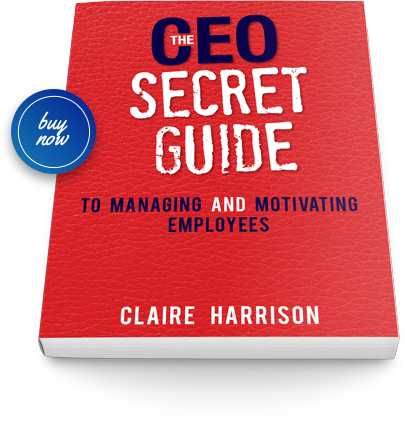You have one task: hire the right person for the right job. Sounds easy task, right? Yet, time and again, great people are employed into unsuitable positions. So, what’s going wrong?
One of the common mistakes we see is managers promoting people beyond their capability. Many leaders we talk to have an honourable intention; they are committed to growing people from within the business.
Of course, there are many potential benefits to hiring from within, including:
- Return on training investment
- Reduced recruitment costs
- Heightened employee engagement that comes with showing people an upward-trending career path
- A recruit who already has strong internal relationships and intricate knowledge of the inner workings of the organisation
- Successors in place for key rules.
So, why doesn’t it always work?
In some cases, the internal recruit’s experience is a nice-to-have rather than a necessity of the new role. The costs saved during recruitment and the added value of increased employee engagement can be negated by not having the right person in the position to achieve strategic goals.
Your internal recruit might have the advantage of insight gathered from the early days, but do they have the mix of skills, experience and behaviour needed as the company grows? Are you prepared to train them to fill skills gaps, and how will this impact time to productivity?
If you’ve found someone from within to tick all the boxes of the new role – congratulations! You’ve shown that it’s possible to find the right person for the right job without even leaving the building.
If you’re now wondering what boxes need to be ticked and in what priority, it’s time to trace your steps back to the beginning.
4 steps to finding the right person, every time
1. Clarity
To get clarity, ask yourself:
-
-
- Why does the job exist?
- What are its key functions?
- What type of person will be most successful in this position? (e.g. what experience do they need – noting that if you ask for more experience than required, you unnecessarily shrink your candidate pool.)
- Do you have an up-to-date position description, including selection criteria?
- Have you identified the job’s key performance and behavioural standards?
- Are there any constraints to recruiting your ideal candidate? (e.g. budget, availability of people, market competitiveness.)
- How does the position fit with the strategic plan?
-
Next, determine who will be coordinating the recruitment process – you, a member of your team, an agency or a consultant? If it’s an external party, you need to prepare a complete and accurate brief. The more precise information you provide, the less likely the recruiter will misrepresent the position, your organisation or the type of candidate you’re looking for.
2. Compliance
Legislation can affect recruitment in the following areas:
-
-
- Equal opportunity/discrimination
- Privacy
- Award/agreement provisions
- Employment contract law
- Apprentices and trainees
- Minimum employment age
- Occupational health and safety
- Taxation
- Trade practices laws
-
Make sure you’re familiar with all relevant legal requirements before progressing, as you’ll need to consider these throughout the recruitment and selection process. For example:
-
-
- Drafting a job advertisement that doesn’t lawfully discriminate against any person
- Ensuring you ask each candidate the same questions and the questions themselves are non-discriminatory
- Knowing the minimum pay rates and condition of employment for your business.
-
3. Promotion
The larger pool of candidates you can attract, the more likely you’ll land a superstar. The best way to promote your job varies by industry and the position itself. You may choose to promote the position via any of the following channels:
-
-
- Online job ad sites
- Industry job boards
- Universities, colleges and schools
- LinkedIn, Facebook, YouTube and other social media sites
- Newspapers and magazines
- Career expos
- Flyers on notice boards
- Word of mouth
- Employee referral programs
- Employer open days
- Executive search firms
-
And remember, you won’t catch a fish if you don’t have the right bait. If the employee value proposition is clear and you have a large pool of candidates, you’ll never have to worry about too few qualified applicants.
4. Selection
You might think that a robust selection process is too time-consuming, particularly when you’re keen to get someone on board quickly. However, like most things, time invested now will save you considerable time and money in the future.
Consider using several of the following selection tools before making your decision.
-
- Predetermined selection criteria to shortlist using resumes and cover letters
- Skills and experience interview, entire by phone or in-person.
- Behavioural interview, in-person, to thoroughly assess the person’s previously demonstrated behaviours, attitudes, experiences and knowledge as relevant to the role. Past behaviour predicts future behaviour.
- Psychometric testing to examine ability and personality (and get valuable information you often can’t obtain in an interview).
- A site visit to ensure the candidate understands the physical working conditions.
- Case studies to provide candidates with challenging work scenarios and ask them to prepare a course of action with considerations.
- Presentation on a relevant topic if the person will be required to present regularly.
- Meeting with peers to allow the candidate to gain a feel for the business and get feedback and buy-in from the people the candidate will be working with.
- Reference checks to get validation from current or recent managers.
- Job trials to evaluate how the candidate will actually perform in the role.
Claire Harrison is the Founder and Managing Director of Harrisons, a flourishing HR consulting business that sprouted in 2009 from Claire’s passionate belief that inspiring leaders and superstar employees are the key success factor to any business. With over 20 years’ experience, Claire has worked as a HR Director of multi-national organisations, as a Non-Executive Board Director, and a small business owner. Claire’s corporate career includes working with companies such as BHP, Westpac, Fonterra and Mayne Nickless.




